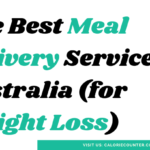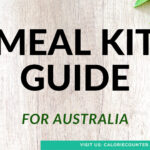Living in a rural area of Australia can sometimes make it challenging to maintain a healthy diet, but with some planning and preparation, you can turn your own home into a Centre of Excellence for your family’s nutritional health. When you know how many calories you need per day and can track your meals, you can become an effective calorie counter.
Here are some steps you can take to achieve this:
Shop locally
Take advantage of the local produce and meat available in your area. Shop at farmers’ markets, roadside stands, and local butcher shops to find fresh and locally sourced ingredients. Not only is this a great way to support local farmers, but it’s also a great way to ensure that your family is consuming fresh and nutritious food.

Cook from scratch
Cooking from scratch can be time-consuming, but it’s also a great way to control the ingredients in your family’s meals. Instead of relying on packaged or processed foods, make your own sauces, soups, and dressings from scratch. You can also cook large batches of food and freeze them for easy and healthy meals on busy days.
Get creative with vegetables
Vegetables are an essential part of a healthy diet, but they can sometimes be overlooked in favour of more appealing options. Try incorporating vegetables into your family’s favourite dishes, such as adding spinach to smoothies or hiding grated zucchini in pasta sauce.
Encourage family involvement
Getting your family involved in the meal planning and preparation process can be a great way to promote healthy eating habits. Involve your children in grocery shopping and meal prep, and encourage them to try new foods and flavours. Just as you might teach your teenagers about mental, sexual, hygiene, and relationships health, you should show them the way when it comes to nutrition.
Prioritise hydration
Drinking enough water is essential for overall health, and rural living can sometimes mean access to clean water is limited. Prioritise hydration by investing in a water filter or collecting rainwater, and make sure to offer water to your family throughout the day.
Plan your meals ahead of time
Planning your meals ahead of time can help you avoid unhealthy impulse purchases and ensure that your family is consuming a balanced and nutritious diet. Take some time each week to plan your family’s meals and create a shopping list of the ingredients you’ll need.
One of the most effective ways to ensure you are eating a nutritious diet and staying within your calorie limit is to plan your meals ahead of time. This can help you avoid impulse purchases of unhealthy foods and reduce the likelihood of overeating.
Here’s an example meal plan for a rural resident who wants to lose weight:
Breakfast: Oats Porridge with fresh fruit and nuts
Mid-morning snack: Apple slices with almond butter
Lunch: Grilled chicken salad with mixed greens, tomatoes, and avocado
Afternoon snack: Carrots and hummus
Dinner: Baked salmon with roasted vegetables and quinoa
Shop at farmers’ markets and local produce stores
Rural areas in Australia are often surrounded by farmland and agriculture. Take advantage of this by shopping at local farmers’ markets and produce stores. Not only will you be supporting local businesses, but you will also be able to find fresh, seasonal produce that is often less expensive than what you would find at a supermarket.
Here’s an example meal plan using ingredients found at a local farmers’ market:
Breakfast: Veggie omelet with mushrooms, onions, and spinach
Mid-morning snack: Greek yogurt with fresh berries
Lunch: Grilled zucchini and tomato sandwich on whole-grain bread
Afternoon snack: Sliced cucumber with tzatziki sauce
Dinner: Spaghetti squash with meat sauce made with grass-fed beef and fresh tomatoes
Use online resources to find healthy recipes
The internet is a great resource for finding healthy recipes that are easy to prepare and use ingredients you can find at your local supermarket or farmers’ market. Websites like EatingWell.com and CookingLight.com offer a wide range of recipes that cater to different dietary needs and preferences.
Here’s an example meal plan using recipes found online:
Breakfast: Greek yogurt parfait with fresh berries and granola
Mid-morning snack: Hard-boiled egg with baby carrots
Lunch: Quinoa salad with grilled chicken, mixed greens, and roasted sweet potatoes
Afternoon snack: Roasted chickpeas
Dinner: Broiled fish with roasted Brussels sprouts and sweet potatoes
Maintaining a healthy diet and losing weight in a rural area of Australia can be challenging, but it is certainly possible with some planning and creativity. By planning your meals ahead of time, shopping at farmers’ markets and local produce stores, and using online resources to find healthy recipes, you can achieve your weight loss goals while enjoying nutritious and delicious meals. Remember, consistency is key, so stick with your plan and stay motivated!









